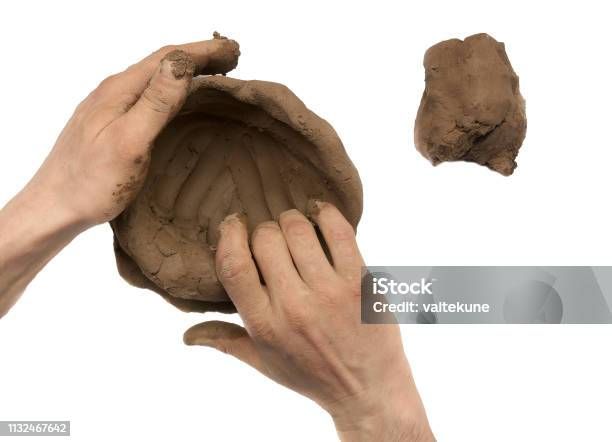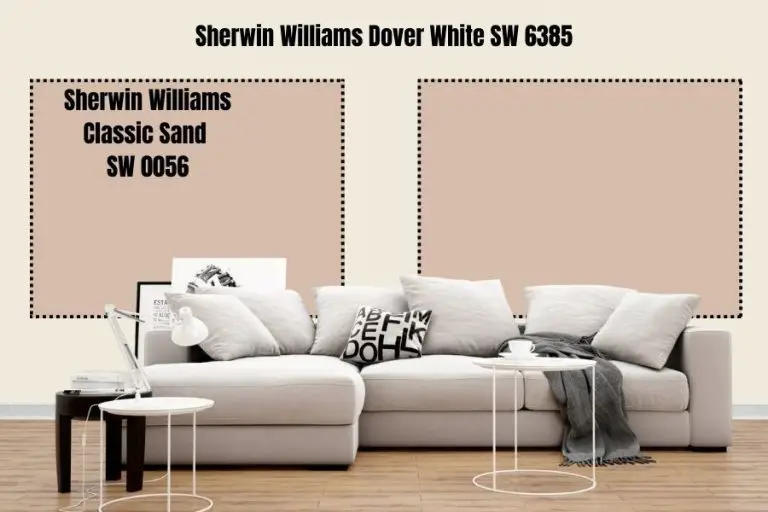How Thick Should A Clay Pin Be?
Clay pins are small decorative items made of clay that can be used in a variety of ways. Some common uses for clay pins include jewelry making, embellishing fabrics or clothing, scrapbooking, mixed media art, and more. When making a clay pin, one of the key factors to consider is the thickness of the pin.
The ideal thickness for a clay pin depends on several factors. These include the pin’s intended structural integrity and durability, the visual impact and visibility of the design, the type of clay being used, and personal preferences for the look and feel of the pin. Generally, a thickness between 1/8 inch to 1/4 inch provides a good balance of strength, visibility, and design options. However, the appropriate thickness can vary based on the specific clay and design elements involved.
In this article, we will provide an in-depth look at determining the optimal thickness for clay pins based on their intended use and design.
Thickness for Structural Integrity
The thickness of a clay pin needs to be sufficient to support the weight of the clay sculpture without buckling or breaking. This depends on factors like the size of the sculpture, the type of clay being used, and where the pin is located.
For a small sculpture under 1ft in height, a pin thickness around 1/4″ is usually adequate for most clay types. As the size increases, thicker pins are needed. For a 2-3ft sculpture, pins should be 3/8″-1/2″ thick. Large pieces over 3ft tall require pins at least 1/2″ thick, and up to 3/4″-1″ for substantial parts like outstretched limbs.
The clay body itself also influences needed thickness. Very soft, flexible clays like polymer clay can get by with thinner pins around 1/8″-1/4″ even for large pieces. But stiff, heavy clays like stoneware or porcelain require thicker pinning for the same sculpture size.
In general, high stress areas that support a lot of weight like thin appendages, joints, or cantilevers need thicker pinning for stability. Low stress areas like the torso can use thinner pins. Testing pins before baking by gently bending and twisting the clay gives a sense of thickness needed. If pins feel too flexible, increase thickness for sturdier support.
Thickness for Visibility
When determining the appropriate thickness for a clay pin, visibility is an important consideration. The thickness of the pin will impact how well it can be seen on the finished sculpture.
For small sculptures, the pin can be relatively thin, around 1-2mm. This will allow it to be inserted securely while still being subtle enough not to detract from the overall look of the piece.
For larger sculptures, a thicker pin in the 3-5mm range is recommended. The added thickness will make the pin more visible proportionate to the sculpture size. This will help the pin stand out and be located more easily for handling and transporting the artwork.
In general, the pin should be thick enough that it can be seen clearly by the naked eye on the finished sculpture. An excessively thin pin may be difficult to find when needed. Scaling the thickness up slightly as the sculpture size increases will help maintain good visibility.
Thickness for Durability
When considering the thickness of a clay pin, durability is an important factor. The pin must be thick enough to withstand normal handling and moving of the finished sculpture without breaking or cracking.
In general, thicker clay is more durable and resistant to damage. Thinner pieces are more fragile and prone to chipping or snapping if bumped or dropped. The required thickness for durability depends on the type of clay and the planned firing temperature.
Low-fire clays, like earthenware, tend to be more porous and brittle, even when fired. These clays should be made fairly thick, around 1/4-inch or more, to create durable pins that don’t chip or break under normal use. Mid-range stoneware clays can be slightly thinner when fired to maturity, around 1/8 to 3/16-inch.
High-fire stoneware and porcelain clays become vitrified and dense when fired to a high temperature. These clays can be made into thinner yet durable pins, as thin as 1/16-inch. However, thicker pins around 1/8-inch are still recommended for durability.
In summary, thicker clay pins are more durable, while thinner pins are more fragile. The required thickness depends on the clay type and planned firing temperature, with lower-fire clays needing more thickness for durability.
Thickness for Aesthetics
The preferred thickness for visual appeal depends largely on the overall size of the sculpture and expected viewing distance. A smaller sculpture that fits in the palm of your hand can get away with thinner sections that maintain the form, while larger, life-size sculptures need sufficient thickness to convey mass and presence.
If a sculpture is meant to be viewed up close, such as a figurine on a desk or table, thinner sections down to 1/4 inch or less will not detract from the visual appeal. But if the sculpture is going on a high pedestal or podium for viewing from a distance, thickness needs to increase to 3/4 inch or more to achieve the right visual balance and appeal. Thinner sections can look spindly or lacking in substance from a distance.
Facial features and other fine details also require adequate thickness for definition and visual impact. Aim for thickness between 1/2 and 3/4 inches for smaller features to avoid them looking frail or indistinct when viewed from an intended distance of a few feet or more.
Consider both the formal qualities of shape, line, texture as well as the realistic qualities of mass and structure. An ideal thickness both enhances the overall aesthetics and captures the essence of form.
Standard Thicknesses
When working with clay to create sculpture pins, artists generally follow some standard thicknesses based on the overall size of the piece:
- Small pins under 2 inches: 1/4 inch thickness
- Medium pins 2-4 inches: 1/2 inch thickness
- Large pins over 4 inches: 3/4 to 1 inch thickness
Using these standard thicknesses as a starting point helps ensure the structural integrity and durability of the finished piece. Of course, thickness can be adjusted as needed for any unique design elements or structural considerations.
For very small and delicate pieces, some artists may use thicknesses down to 1/8 inch. While for large, solid sculptures, thicknesses could go up to 1-1/2 inches or more. The size and complexity of the design determines the ideal thickness in each case.
Thickness Recommendations
Deciding on the thickness for your clay sculptures depends on the size and purpose of the artwork. Here are some general recommendations from clay artists and experts:
- For small sculptures (6 inches or less), a thickness between 1/4 – 1/2 inch is typical.
- Medium sized sculptures (up to 18 inches) often have a thickness around 1/2 – 3/4 inch.
- For larger pieces (over 18 inches), a thickness of 3/4 – 1 inch provides stability.
- If the sculpture will have thin extremities like outstretched arms, support them with an internal clay armature for strength.
- For free standing sculptures, especially tall vertical ones, increase thickness to 1 – 1 1/2 inches for sturdiness.
- If the sculpture will be frequently handled, make the thickness a little greater for durability.
- Very large installations and figures may require thicknesses over 2 inches.
Test different thicknesses with small models to find the ideal thickness before working on a full scale piece. Consider both the structural needs and desired aesthetic. In general, err on the thicker side for strength.
Testing Thickness
When working with a new clay, it’s important to experiment with different thicknesses before settling on the final dimension for your pins. Testing allows you to find the optimal balance between structural integrity, visibility, durability and aesthetics.
Start by creating a series of test pins in thicknesses ranging from 1/8 inch to 1/2 inch. Make sure the overall size and shape of the pins is consistent. Then, evaluate the test pins to determine the minimum thickness required for adequate structural integrity.
To test durability, fire each pin according to the clay manufacturer’s guidelines. Once fired, check for cracking or other damage that could result from the clay being too thin. Fired clay is more brittle, so this is an important test. You want the thickness that produces a durable pin while minimizing excess clay usage.
Consider aesthetics as well. Does the thinnest pin allow for the level of detail and refinement you want in the final pins? Thicker pins may allow you to include finer sculptural elements.
By methodically testing an array of thicknesses, you can hone in on the optimal dimension – thick enough for durability yet thin enough to conserve clay and achieve your design goals.
Thickness for Specific Clays
The ideal thickness for a clay pin can vary depending on the specific type of clay used. Each clay has its own properties that affect the appropriate thickness.
For example, porcelain clays are very strong even when fired at low temperatures. Porcelain can be made exceptionally thin, with thicknesses as low as 1-2mm while maintaining strength. However, porcelain’s hardness can make it prone to chipping if too thin.
In contrast, earthenware clays require higher firing temperatures but tend to be less durable. Earthenware pins should generally be a bit thicker – around 3-4mm for structural integrity. The thicker shape helps compensate for earthenware’s increased vulnerability to damage.
Some sculptural clays are meant for modelling and not firing at all. These clays are extremely soft, so sculptural clay pins should be the thickest, from 4-6mm. The thicker shape provides strength to the unfired soft clay.
In summary, the ideal thickness for a clay pin depends on properly matching the thickness to the specific type of clay’s inherent properties and firing requirements.
Conclusion
There are many factors that go into determining the ideal thickness for a clay pinch pot or sculptural piece. The thickness needs to be enough to maintain structural integrity, while also allowing for visibility of details, durability over time, and achieving the desired aesthetics. Standard thicknesses tend to range from 1/4 inch for smaller pieces up to 1 inch for larger works.
When deciding on thickness, consider the size and purpose of the piece. Larger pieces will require thicker walls for stability. If the piece will be frequently handled, opt for a thicker wall to prevent cracking or breaking. Increase thickness near the bottom for additional support. For pieces with fine details or carvings, keep walls on the thinner side for better visibility. Ultimately the thickness should align with the clay type and your artistic vision for the finished product.
In summary, base thickness on the size, structure, details, and durability needs of each unique piece. For most small to medium sculptural works, a thickness between 1/4 and 1/2 inches allows for sturdiness, refined details, and pleasing proportions. Test different thicknesses to find the right balance for your creation. With mindful planning and practice, you can determine the perfect thickness for your next clay masterpiece.




